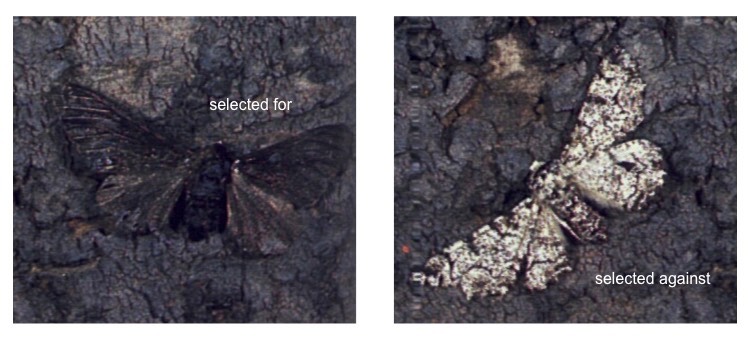A polymorphism is the occurrence of two or more clearly different phenotypes within the same population of a species
- Whereas alleles are the individual components of a gene, polymorphisms are the individual components of a traits
- Consequently, polymorphisms reflect the involvement of more than one allele for any given gene in the gene pool
Transient Polymorphisms
Occurs when there are two alleles in the gene pool and one allele is gradually replacing the other
This is due to a strong environmental pressure causing directional selection to eliminate one allele from the gene pool
Example: Light vs dark melanic variants of the peppered moth (direction of selection determined by environment)
Transient Polymorphism – Melanism in Peppered Moths

Balanced Polymorphisms
Occurs when there are two alleles in the gene pool and the frequency of the two alleles is not changing
This is due to selective pressures promoting the coexistence of two alleles (heterozygous advantage) via stabilising selection
Example: Sickle cell anaemia in African nations (heterozygotes do not develop anaemia but have resistance to malaria)
Balanced Polymorphism – Heterozygous Advantage in Sickle Cell Anaemia

